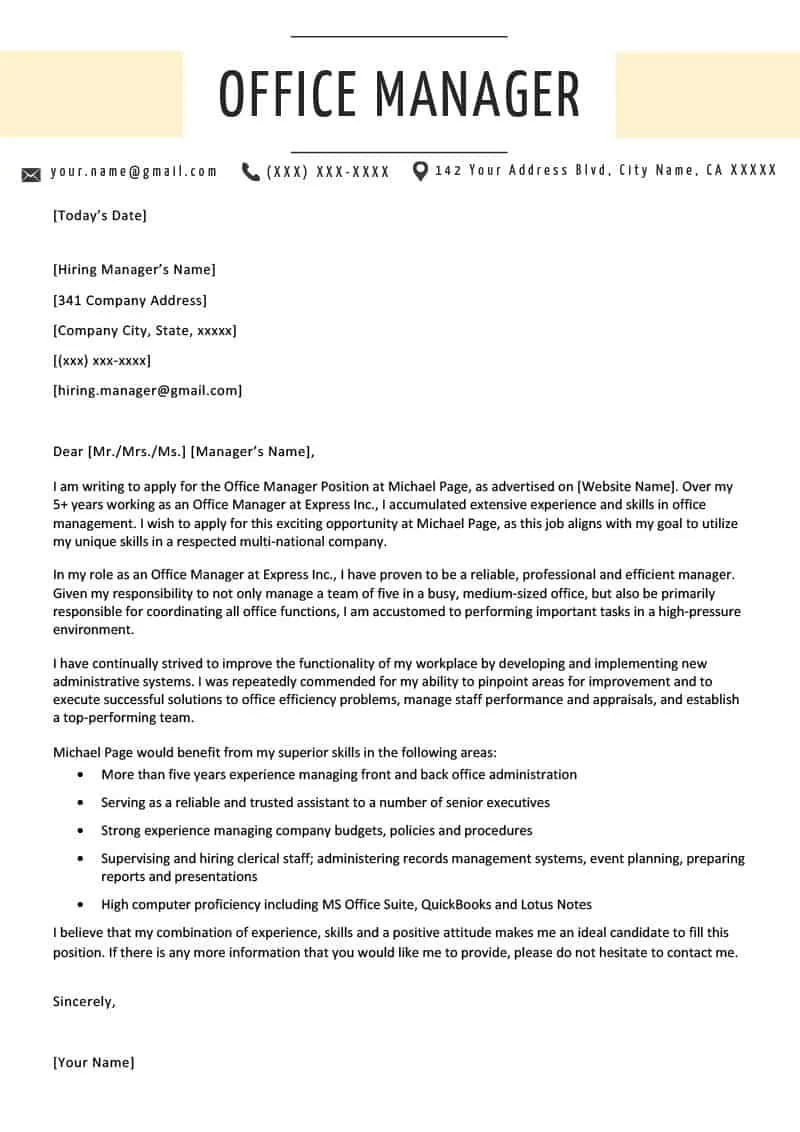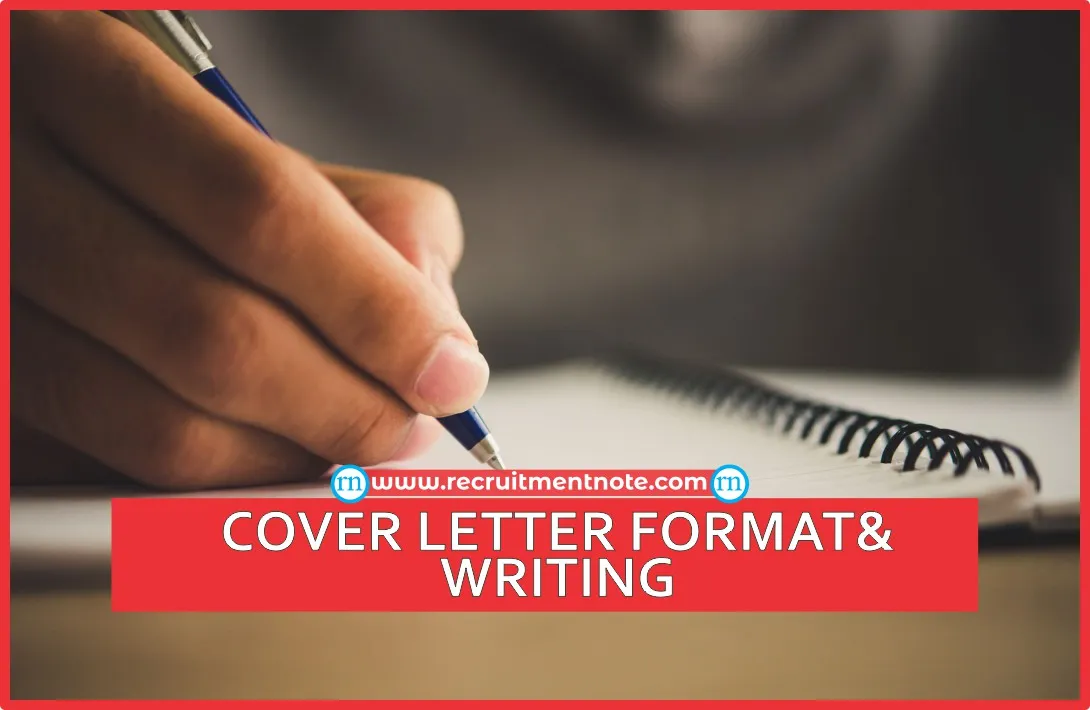Why a Cover Letter Matters for Writing Jobs
In the competitive world of writing, a cover letter is your first impression, a chance to go beyond your resume and showcase your personality, passion, and proficiency as a writer. A well-crafted cover letter doesn’t just list your skills; it tells a story, demonstrating how your unique abilities align with the specific requirements of the writing job. It’s an opportunity to provide context to your resume, giving potential employers a glimpse into your writing style and thought process. Remember, many hiring managers in the writing field are looking for more than just qualifications; they are looking for writers who are passionate about their craft and can communicate effectively. Therefore, a compelling cover letter serves as a bridge, connecting your experiences and skills to the employer’s needs, ultimately increasing your chances of landing the job.
Highlighting Your Writing Skills
When highlighting your writing skills in a cover letter, it’s crucial to be specific and provide concrete examples. Instead of just stating you have excellent writing skills, demonstrate this by describing your experience with various writing styles, such as creative writing, technical writing, or copywriting. Quantify your accomplishments whenever possible; for instance, mention how you increased website traffic by a certain percentage through your blog posts or how you improved customer engagement through your email campaigns. Furthermore, emphasize the skills most relevant to the job description. If the job requires SEO writing, highlight your experience with keyword research, content optimization, and SEO best practices. The goal is to show, not just tell, the hiring manager that you possess the necessary skills to excel in the role. Use action verbs to make your achievements more impactful and memorable, such as ‘developed,’ ‘created,’ ‘managed,’ or ‘implemented.’
Showcasing Your Writing Samples

Your writing samples are the tangible proof of your abilities, so make sure they are readily accessible and relevant to the job. If the job posting requests specific types of writing samples, make sure to include those first. Include a link to your online portfolio, website, or attach samples to your email. If you do not have an online portfolio, consider creating a simple one using platforms like WordPress or Google Sites to showcase your best work. Always choose samples that align with the type of writing required for the job. If the job involves technical writing, don’t showcase only creative writing samples. For each sample, provide a brief description or context, explaining the purpose of the piece, the audience it was intended for, and the results you achieved. This will help the hiring manager understand your work and how it applies to the job. Quality over quantity is key; select your best pieces that demonstrate your range and expertise. Be prepared to discuss your samples in detail during an interview, should you be asked about them.
Tailoring Your Cover Letter
Generic cover letters are easily spotted and often discarded. Tailoring your cover letter to each specific writing job is essential to make a positive impression. This means more than just changing the company name and job title. Research the company and the specific role to understand their needs, values, and the style of writing they prefer. Customize your letter to reflect this understanding. Mention specific projects, initiatives, or goals of the company and explain how your skills and experiences align with their objectives. Highlight the keywords and phrases from the job description and use them throughout your cover letter, demonstrating that you’ve paid attention to their requirements. By showing that you understand the company’s mission and what the role entails, you demonstrate a genuine interest in the opportunity. This effort will make your cover letter stand out from the stack of generic applications, signaling to the hiring manager that you’re serious about the position and that you have taken the time to learn about their organization.
Address the Specific Job Requirements
Carefully review the job description and address each of the specific requirements in your cover letter. This shows the hiring manager that you have read the job posting thoroughly and that you possess the qualifications they are seeking. Organize your cover letter to align with the key requirements. If the job description lists specific skills, experiences, or qualifications, make sure to address each of them. Provide concrete examples of how you have demonstrated these skills in previous roles. For example, if the job requires experience with content management systems (CMS), mention the CMS platforms you are familiar with and provide details about your experience using them. Use the same keywords and phrases from the job description to emphasize your relevant experience. This helps the hiring manager quickly identify that you meet their requirements. It’s also important to address any gaps in your experience. If you lack certain qualifications, explain how you are working to gain those skills or highlight transferable skills that can compensate for any deficiencies.
Express Enthusiasm and Personality

A cover letter is your opportunity to infuse your personality and passion for writing into your application. While professionalism is important, don’t be afraid to let your enthusiasm shine through. Use a tone that reflects your genuine interest in the writing job and the company. Avoid sounding robotic or overly formal. In your cover letter, explain why you are excited about the specific opportunity and what interests you about the company. Mention any values or missions that resonate with you. Share a personal anecdote or a quick story that illustrates your passion for writing. This will help the hiring manager remember you and make you stand out. Show that you are not just looking for a job, but that you are eager to contribute your talents and passion to the team. This level of engagement can make a significant impact on your application, making you more memorable and increasing your chances of securing an interview. Remember to maintain a balance, ensuring your personality is conveyed while maintaining professional writing standards.
Proofread and Edit Meticulously
In the world of writing, impeccable grammar and spelling are non-negotiable. Before submitting your cover letter, proofread and edit it meticulously. Errors can undermine your credibility and make you appear unprofessional. Start by running a spell check and grammar check. However, don’t rely solely on these tools. Read your cover letter several times, both silently and aloud, to catch any errors that automated tools might miss. It is always beneficial to have a second pair of eyes review your letter. Ask a friend, colleague, or writing mentor to read it and provide feedback. They can identify errors, offer suggestions for improvement, and ensure your letter is clear, concise, and compelling. Pay attention to the overall flow and structure of your letter. Make sure your ideas are logically presented and that your sentences are well-constructed. A polished cover letter demonstrates your attention to detail and commitment to quality, essential qualities for any writing job.
Structuring Your Cover Letter
A well-structured cover letter is crucial for making a positive first impression. It should be easy to read, logically organized, and visually appealing. A standard cover letter typically consists of the following parts, each with its own specific purpose and content. Each element is important to create a cohesive and effective document that highlights your qualifications and interests in a compelling way. A well-structured letter demonstrates your attention to detail and professionalism, making it more likely that your application will be noticed and considered by hiring managers.
Header & Salutation

Begin with a professional header that includes your contact information your name, phone number, email address, and, optionally, your LinkedIn profile or portfolio URL. Following the header, address the hiring manager by name if possible. If you don’t know the hiring manager’s name, try to find it on the company’s website or LinkedIn. If you cannot find a name, use a professional salutation like ‘Dear Hiring Manager’ or ‘Dear [Department Name] Team’. Avoid generic greetings, which can make your letter feel impersonal. Addressing the hiring manager by name demonstrates that you have done your research and shows that you are taking the time to personalize your application.
Body Paragraphs [Tips]
The body of your cover letter is where you provide the most important information and demonstrate your qualifications for the writing job. This section should include a brief introduction, 1–3 middle paragraphs, and a closing paragraph. Each paragraph should focus on a specific aspect of your qualifications or interest in the role. Use clear and concise language, and avoid overly complex sentences. Break up long paragraphs into smaller, more readable chunks. The goal is to present your qualifications in a compelling and engaging way, highlighting your value to the company. Make sure to tailor the content of each paragraph to the specific requirements of the job description and the needs of the company. Use action verbs and quantifiable achievements to make your accomplishments more impactful. This demonstrates your skills, experience, and enthusiasm, and creates a favorable impression on the hiring manager.
First Paragraph [Tips]
Your first paragraph should immediately grab the reader’s attention. Start with a strong opening sentence that states the position you’re applying for and how you found the job. Briefly mention why you’re interested in the role and the company. You can also include a concise statement about your most relevant skill or experience. Avoid generic openings, such as, ‘I am writing to apply for the writing position.’ Instead, try a more engaging approach, like stating the specific project or goal that excites you. Be clear about your objective, so the hiring manager understands immediately what you are looking for and why you are the perfect fit for the role. A well-crafted opening will hook the reader and encourage them to continue reading, ensuring your qualifications and enthusiasm are fully considered.
Middle Paragraphs [Tips]

The middle paragraphs are your opportunity to delve deeper into your qualifications and demonstrate your suitability for the writing job. Use these paragraphs to highlight the skills, experiences, and accomplishments most relevant to the job description. Provide specific examples and quantifiable results to support your claims. Describe your experience with different writing styles, such as creative writing, technical writing, or content marketing. Mention any relevant software or tools you are proficient in. Showcase your understanding of the company’s mission and values and explain how your goals align with theirs. Show, don’t just tell, by providing details and examples that illustrate your capabilities. This allows the hiring manager to see your potential and determine if you would fit well into the team. These paragraphs should provide a clear and compelling picture of your qualifications, enabling the hiring manager to see how your experience aligns with their needs.
Closing Paragraph
The closing paragraph should be a call to action, encouraging the hiring manager to take the next step, such as scheduling an interview. Reiterate your interest in the position and summarize your key qualifications. Express your gratitude for their time and consideration. Provide contact information, so the hiring manager can easily reach you. Include a polite and professional closing, such as ‘Sincerely,’ or ‘Best regards,’ followed by your name. Avoid generic phrases such as, ‘I look forward to hearing from you.’ Be direct and positive, expressing your confidence and eagerness to contribute to the company. Make sure the closing leaves a lasting positive impression, encouraging the hiring manager to consider your application favorably and invite you for an interview.
Formatting Your Cover Letter
The formatting of your cover letter is as important as its content. A well-formatted cover letter is easy to read and makes a positive first impression. Use a professional and clean font, such as Arial, Times New Roman, or Calibri, and set the font size to 11 or 12 points. Use standard 1-inch margins on all sides of the document. The letter should be single-spaced with a double space between paragraphs. Align your text to the left and avoid justifying the text, as it can make the letter harder to read. Keep your cover letter to one page. Use bullet points or lists to break up text and highlight key information. Proofread the formatting carefully before submitting your cover letter. A well-formatted cover letter reflects your professionalism and attention to detail, making a positive impression on the hiring manager and increasing your chances of getting the writing job.
